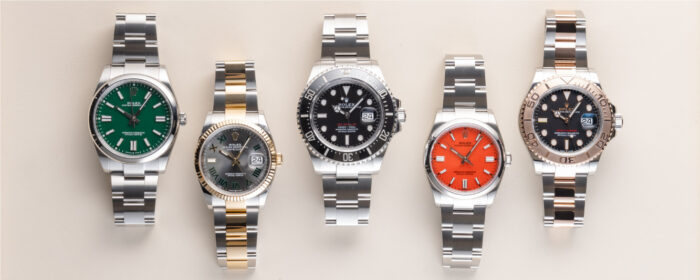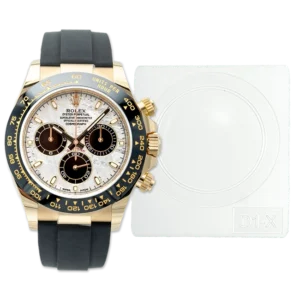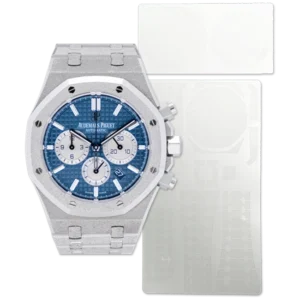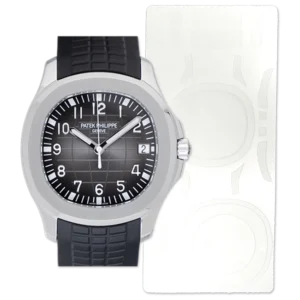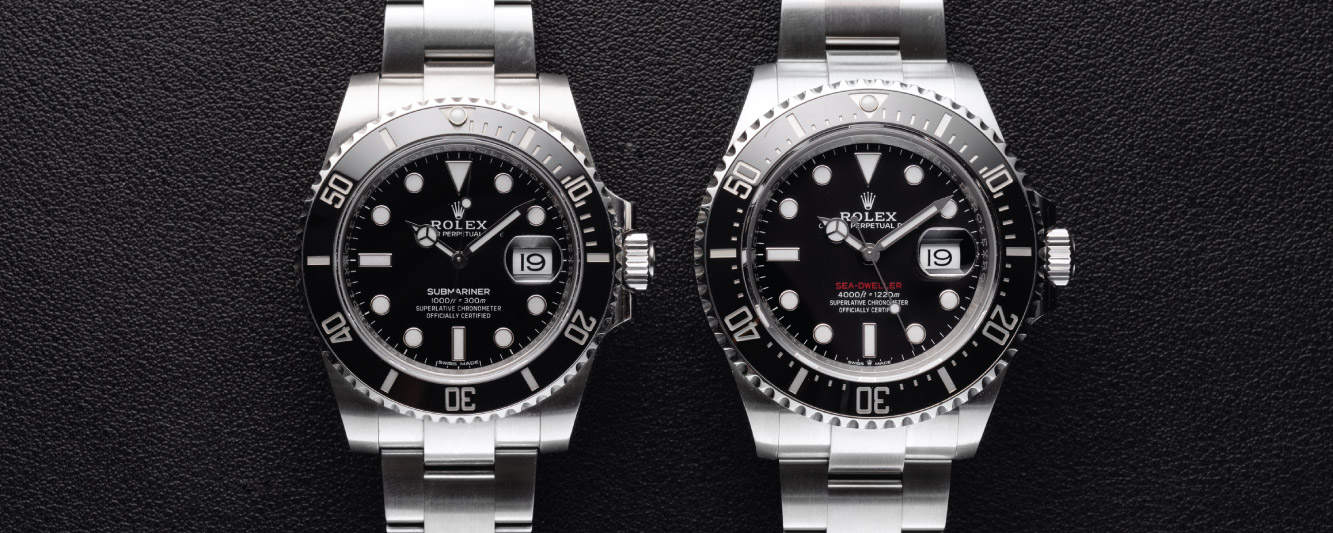

The Rolex Submariner vs The Rolex Sea-Dweller
- Christine Ye
They are, arguably, the two best known and widely revered examples of the dive watch genre in existence. Both, in their own ways, introduced groundbreaking features and each has the trademark Rolex minimalism to their aesthetics which means they can easily double up as either the toughest of tool watches or an elegant everyday wear. Lets take a look at Rolex Submariner vs Rolex Sea-Dweller.
The Rolex Submariner and Rolex Sea-Dweller are undeniable horological legends, designed to withstand punishments and pressures far beyond the endurance of any underwater adventurer. But how do they compare with each other? What individual qualities does each model have to make choosing between them easier? Below, we set out everything you need to know when it comes time to make your decision. First, a little history…
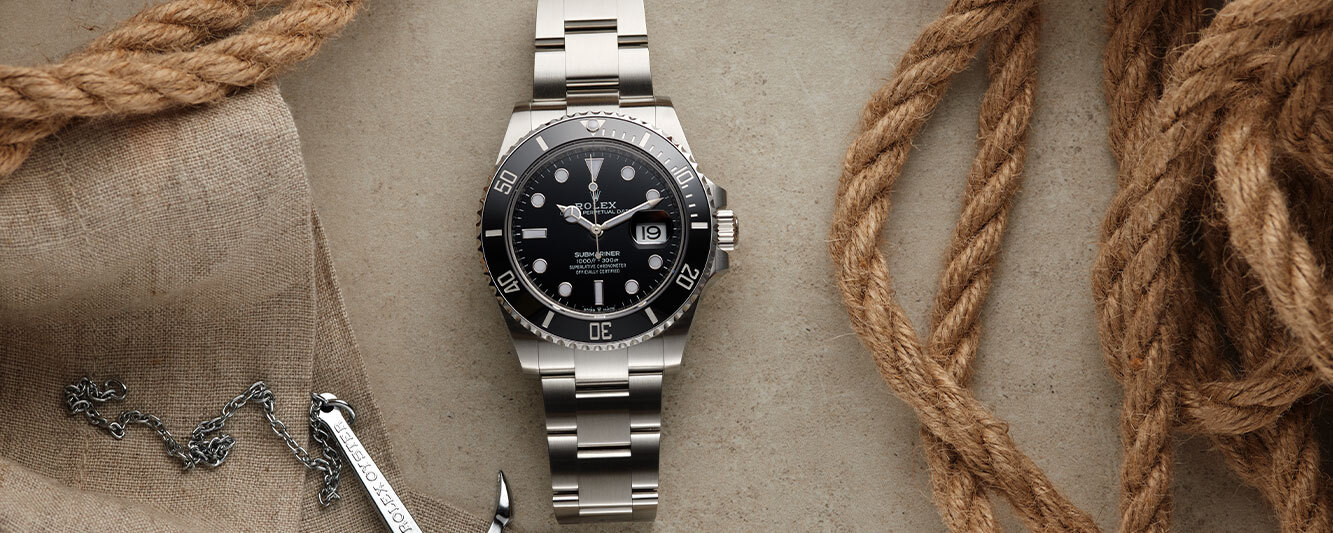
The Rolex Submariner
The Submariner arrived more than a decade before the Sea-Dweller, debuting in 1953 and going on general sale the following year. Contrary to what some believe, it was not the very first dive watch ever made. That honor goes to, depending on your point of view, the Blancpain Fifty Fathoms (which hit the shelves mere months before the Rolex) or else dates back to the 1930s, with either the Omega Marine or Panerai’s Radiomir—a watch created for the Italian Special Forces diving unit which, coincidentally, used Rolex cases and movements. However, while it may not have been the first of its type, the Submariner was the first watch officially rated down to 100m.
It was the brainchild of the brand’s then-Public Relations Director, René-Paul Jeanneret, himself a fanatical recreational diver and good friend of underwater conservationist and pioneer, Jacques-Yves Cousteau. And it was with Cousteau’s involvement that Jeanneret was able to build on the concept of Rolex’s Oyster case, a revolutionary invention which had done so much to popularize the wristwatch as a male accessory. Once seen as fragile, feminine pieces of jewelry, the Oyster caused an about-turn in image when it was unveiled in 1926, with wristwatches suddenly being robust enough for even the manliest of men to wear.
However, the Submariner was going to need something still more substantial to deal with the forces a Scuba diver experienced. To that end, Rolex invented the Twinlock crown, an arrangement which used two O-ring gaskets on the crown’s winding stem inside the watch case, creating a pair of sealed zones to amp up the water resistance.
To finish off, the Sub borrowed the rotating bezel innovation from Rolex’s underappreciated Turn-O-Graph, engraving it with a 60-minute scale to allow divers to keep a simple and easily read track of their time submerged.
From the time of its debut, the Submariner was, and has always remained, a huge hit with the watch buying public. Its abilities, versatile wearability and timeless design have kept it at the very top of the dive watch food chain for nearly 70-years now.
Since the end of the ‘60s it has been available with or without a date function; the no-dates have always been cast exclusively in the toughest stainless steel, while the date versions have gone on to be delivered in yellow or white gold, Rolex’s own two-tone Rolesor, and even with the option of diamond-studded indexes. As such, it may now be viewed more as a status symbol than an indispensable piece of underwater safety equipment, but it doesn’t really matter. Its reputation is secure, and the Submariner is the first image to spring to mind when you hear the words ‘luxury dive watch’. The history of the Submariner goes back to 1953, however there are still many instances where the Submariner has grown in popularity, performance, and even designs.
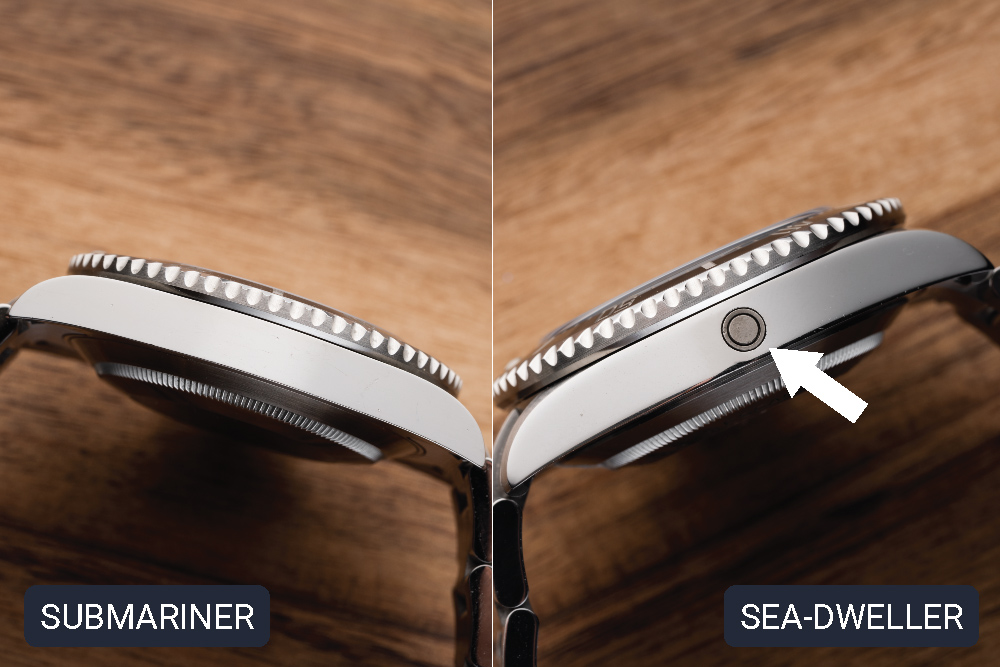

The Rolex Sea-Dweller
By comparison, right up until its latest incarnation, the Sea-Dweller was the tougher, more serious dive companion, made for those who truly go beyond.
Much like as with Pan Am Airlines and the GMT-Master, the Sea-Dweller came about through a collaboration between Rolex and one of the world’s forerunners in their particular field—in this case, COMEX. The leading commercial and saturation diving outfit approached the watchmaker with a very specific problem in the mid ‘60s. Although the watches they were using at the time were capable of surviving the crushing pressures in which their crews were working, strangely, the complications were only becoming apparent on the ascent back to the surface.
Those divers whose jobs involved them living in deep underwater habitats for days or weeks at a time had to breathe a tightly controlled mix of gases, rich in helium. And it was the helium which, due to the minuteness of its molecules, was able to seep inside the team’s watch cases. While still at depth, that was not a concern. But when they were brought back to sea level, and the resulting reduction in pressure caused the helium to expand, it could blow the crystal off the face of the watch.
To work on a solution, Rolex teamed up with fellow Swiss brand Doxa and together they came up with the HEV, or Helium Escape Valve. Essentially a spring-loaded, one-way regulator set into the side of the case at the nine o’clock, it would open once the pressure inside the watch became greater than the ambient and allow the helium to bleed back out gradually before it could cause any harm.
The invention was trialed on a ref. 5513 Submariner and extensively field tested before finding its first permanent home on the debut Sea-Dweller, the ref. 1665, in 1967.
Along with the HEV, the watch now known in collector circles as the DRSD (Double Red Sea-Dweller, for its two lines of red dial text) also had a far thicker case and crystal to help absorb the immense forces at play, along with the next generation of winding crown system, known as the Triplock. Together, they gave the DRSD a fearsome water resistance of 2,000ft, putting it leagues ahead of just about anything else on the market at the time.
Still not satisfied, Rolex were able to double that to 4,000ft from 1978 and the arrival of the ref. 16660 (or the Triple Six) thanks to its larger HEV and a sapphire crystal. Yet, despite its popularity, the Sea-Dweller was briefly discontinued from 2008 to 2014 to make way for the insane Deepsea, a watch waterproof to 12,800ft—as near as makes no difference two-and-a-half miles down.
Happily though, the Sea-Dweller is now very much a staple of the catalog, and one which has undergone some major changes in the last few years. We’ll get onto those now, as we compare it to the venerable Submariner.
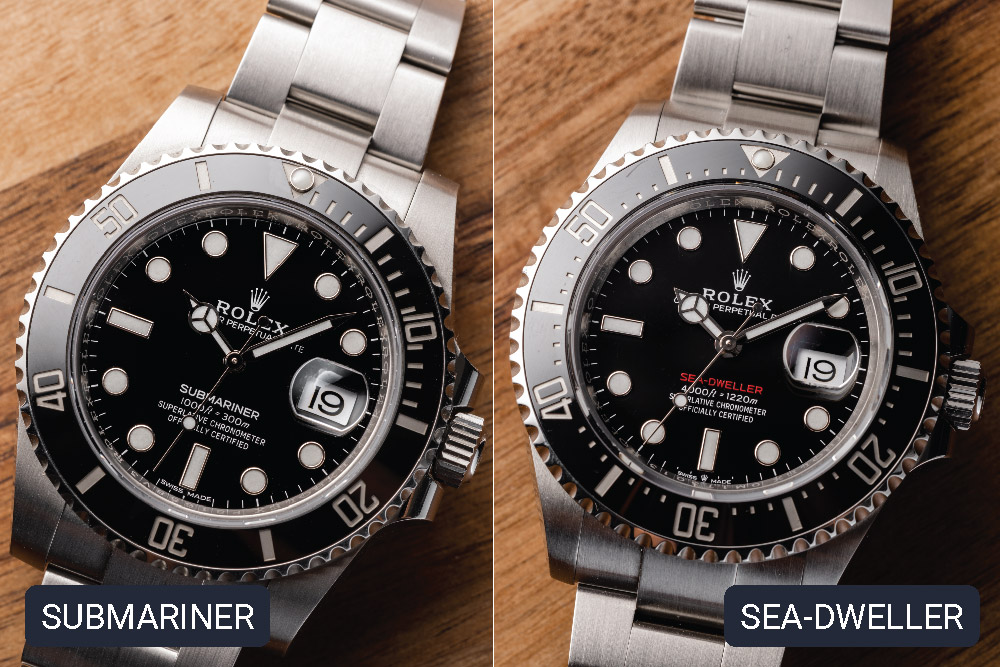

Rolex Submariner vs Rolex Sea-Dweller: Visuals
When the Sea-Dweller first arrived, there was no doubting its ancestry. The Submariner was already the blueprint for what a luxury dive watch should look like, so there was no sense messing with a winning formula. Therefore, Rolex simply beefed-up the parts which needed beefing up to cope with the environments for which the Sea-Dweller was commissioned.
That left both looking remarkably similar; each was a masterwork in robust restraint, with the sort of timeless styling that had worked its way into the general horology psyche and it has carried on right up to the present day.
Until 2017 the most immediately noticeable difference between the two was the lack of a magnifying lens over the date window on the Sea-Dweller.
The Cyclops has been a bone of contention with Rolex fans ever since it was introduced in 1953. It increases the apparent size of the numerals underneath by 2.5 times, which is obviously very handy. Yet purists dislike how it leaves the dial unbalanced and asymmetrical, and it was particularly contentious on the first date-equipped Submariner from the late ‘60s, the ref. 1680.
Because of the depths the Sea-Dweller was built for, Rolex were unable to ensure the lens would stay on under the massive pressures, and so the first several iterations were Cyclops-free.
That has now changed, and both the Sub and the Sea-Dweller are fitted with the magnifier—and it is still a prickly subject amongst traditionalists.
Other subtle differences you might pick up on; the Submariner’s bezel has minute hash marks engraved for just the first 15-minutes while on the SD they continue around the entire circumference. And the dial text on the current Sub is white across all variants, whereas on the Sea-Dweller, the name is picked out in gold on the Rolesor version and in red (as a nod towards the original DRSD) on the steel model.
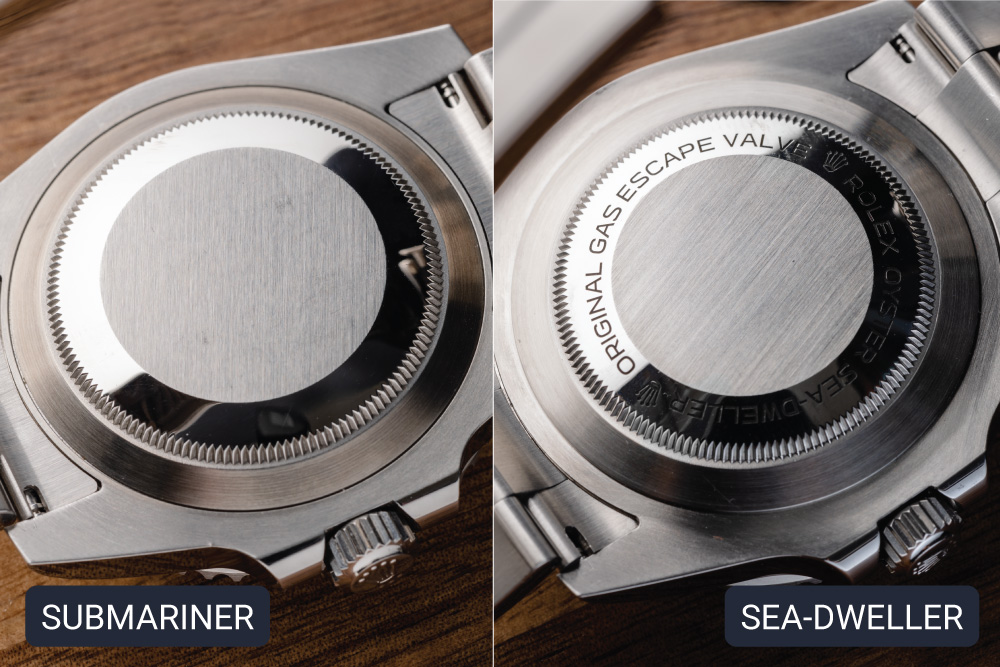

Rolex Submariner vs Rolex Sea-Dweller: Sizes
The biggest shakeup in the life of the Sea-Dweller thus far came about with the latest generation, the ref. 126600 released in 2017.
Not only did it grow in size to an unprecedented 43mm, leaving it 3mm larger than the Submariner of the time, it also dispensed with some of its out-and-out tool watch aura and appeared in Rolex’s own two-tone Rolesor—the first time it had been seen in anything but stainless steel since its inception.
Both changes came as something of a surprise (and especially the Rolesor move) but the increase in dimensions was a welcome one from most quarters, with the prevailing consensus being that 40mm was too small for a serious modern sports watch.
Since then, the Submariner has caught up a little, now at 41mm with the current model. It has also taken a step back from its love-it-or-hate-it Super case and returned somewhat to its more vintage-inspired sweeping lines.
But the Sea-Dweller’s extra width, and especially its additional thickness (14.7mm to the Sub’s 12.3mm) leaves it feeling much more substantial on the wrist. It is something to consider if you want your watch to tuck beneath a shirtsleeve as well.
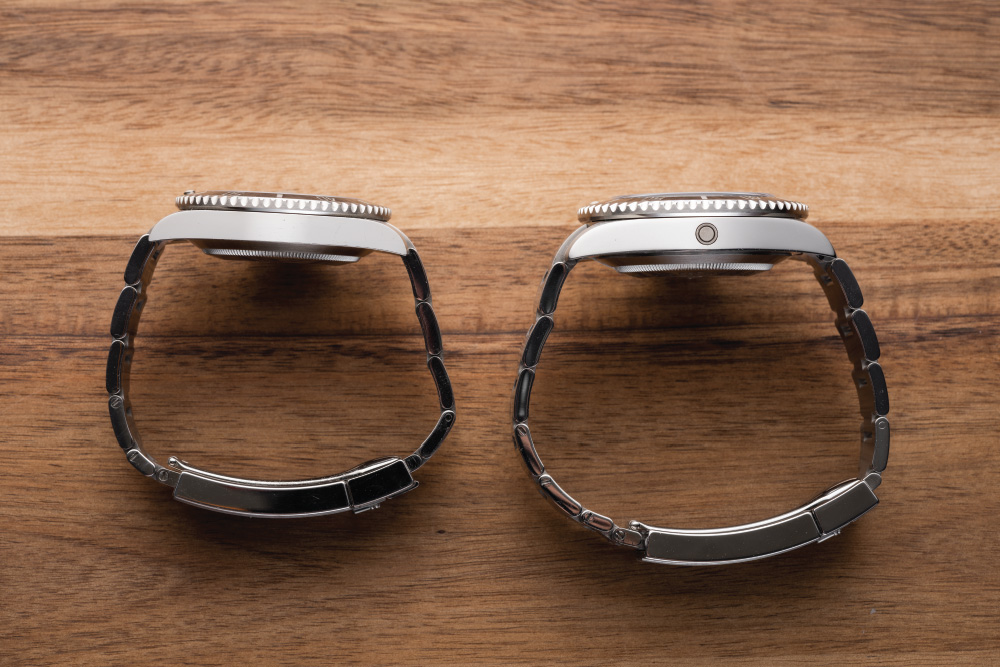

Metals & Options
Of the two, it is the Submariner which has far more in the way of choice—in material, color and function. There is still, as there has always been, a no-date, all stainless steel Submariner; the only metal in which the dateless Sub has ever been issued.
However, the Submariner Date is offered in steel, full white or yellow gold, as well as yellow Rolesor, Rolex’s own name for the meeting of gold (used for the bezel, crown and central bracelet links) and steel (on the case and outer links).
On top of that, you can take your pick from a variety of color schemes. The all-steel versions can be had with either a black dial and bezel (also the only option for the no-date Sub), or else with a green bezel and black dial.
With the yellow gold and Rolesor models, they come with all black or all blue dials and bezels, the blue dials differing nicely by being given a beautiful metallic sunburst effect which changes hue in various lighting conditions.
As for the white gold watch, that is only available with black dial and blue bezel.
With the Sea-Dweller, as mentioned already, there are now two models; in all-steel and in yellow Rolesor. Each has a black dial and bezel, as befits a sober tool watch.
All the materials Rolex uses are identical for both models. The steel is 904L across the board, with the brand being just about the only manufacturer in the industry to go to the expense of employing it. It was chosen for its superior corrosion resistance, perfect for a dive watch, but it has the added benefit of holding a unique shine when polished, meaning a steel Rolex looks unlike anything else on the market.
The gold is all 18k and forged, as is the steel, in Rolex’s own foundry at their Plans-les-Ouates base outside Geneva. It gives the company complete autonomy over the makeup and color of the precious metal, with their usual draconian focus on quality control.
The bezels are Cerachrom, another proprietary alloy, this time in ceramic. Touted as scratchproof, fade proof and just about unbreakable, it means each watch’s surround should stay looking brand new indefinitely. Even the numerals are coated in platinum to retain their luster over the years.
And finally, the dial indexes, with their trademark mix of dots and batons with the 12 o’clock inverted triangle, are coated in Rolex’s patented Chromalight and outlined in white gold to prevent tarnishing.
Same Movements
Something else shared by both the Submariner and the Sea-Dweller, at long last, is their movement.
The Cal. 3235 (and the Cal. 3230 in the no-date) is the replacement for the celebrated Cal. 3135 (Cal. 3130), considered one of the finest mass-produced calibers of the modern age and one in use since 1988.
The Sea-Dweller received the next generation mechanism with its current version in 2017, while the Sub had to wait until 2020 before it got its update.
However, the Cal. 3235 is much more than just a minor reworking of its predecessor. Rolex has replaced or improved on around 90% of its components, with the introduction of the revolutionary Chronergy escapement seen as the most significant.
By skeletonizing and geometrically offsetting the pallet fork and escape wheel, the brand has managed to improve the Chronergy’s efficiency by around 15% compared to traditional Swiss Lever escapements.
Alongside that, the Cal. 3235’s power reserve has increased to an impressive 70-hours over the previous 48, while running at the same 28,800vph frequency as the rest of the manufacture’s portfolio.
It also adheres to Rolex’s Superlative Chronometer certification, guaranteeing an accuracy of between -2/+2 seconds a day and comes with a class-leading five-year warranty.
Rolex Submariner
| Model Reference | Retail Price | |
| 124060 (Steel, No Date) | $8,100 | |
| 126610LN (Steel, Black) | $9,150 | |
| 126610LV (Green Bezel) | $9,550 | |
| 126613LB (Rolesor, Blue) | $14,300 | |
| 126613LN (Rolesor, Black) | $14,300 | |
| 126618LB (Yellow Gold, Blue) | $36,950 | |
| 126618LN (Yellow Gold, Black) | $36,950 | |
| 126619LB (White Gold) | $39,650 |
Rolex Sea-Dweller
| Model Reference | Retail Price | |
| 126600 (Steel) | $12,600 | |
| 126603 (Rolesor) | $16,600 |
As you can see, it is the stainless steel models which have the largest variation between their retail price and their price on the preowned market. In the case of the Submariner, the green bezeled model actually sells for more than both Rolesor references, despite the value of the gold on the latter.
Partly this is down to how new the current Sub is, only having been released last year. The Sea-Dweller, launched four years ago, has had time to stabilize a little between new and preowned versions.
Rolex Submariner vs Rolex Sea-Dweller: Take Your Pick
So there we have our comparison between the Rolex Submariner and the Rolex Sea-Dweller. The big question is, which one should you pick?
Obviously, in the end, it will all come down to personal preference, but there are some things to take into account. The Sea-Dweller is larger and substantially heavier—194g versus the Sub’s 157g or so. Plus, the extra 2mm in width, although it doesn’t sound like a lot, could make all the difference depending on your wrist size. It is vital to try both on before making a decision, to see which is most compatible.
It is also important to take into account where you will be wearing the watch. The Submariner is the ultimate versatile everyday wear, never looking out of place whether its matched with a suit and tie or jeans and t-shirt. The Sea-Dweller’s extra bulk, as we said before, makes it trickier to slip under a close tailored sleeve.
That aside though, it is really a case of not being able to make the wrong decision. Each watch is an absolute classic, legendary in its field, both are powered by the same faultless, cutting-edge engine and they are more than capable of withstanding absolutely anything life throws at them—whether on dry land or hundreds of feet underwater.
Buy A Rolex


-


 Current Model
Current ModelRolex Submariner No Date Black Dial 124060
$12,499 Buy Now View -



Rolex Submariner No Date Black Dial 124060 – Used
$11,500 Buy Now View -
Sale!


 Current Model
Current ModelRolex Submariner Date Black Dial 126610LN
$14,400Original price was: $14,400.$13,900Current price is: $13,900. Buy Now View -



Rolex Submariner Date Black Dial 126610LN – Used
$12,900 Buy Now View
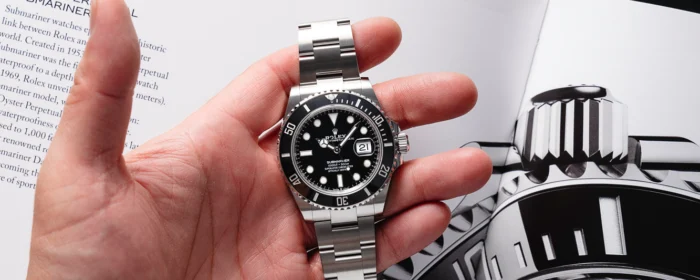

Which Rolex Watches Best Hold Their Value?
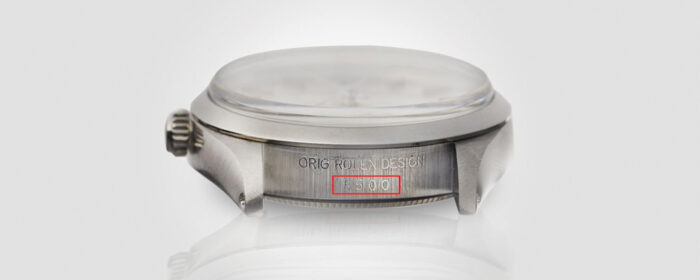

The Ultimate Rolex Reference Numbers Guide
